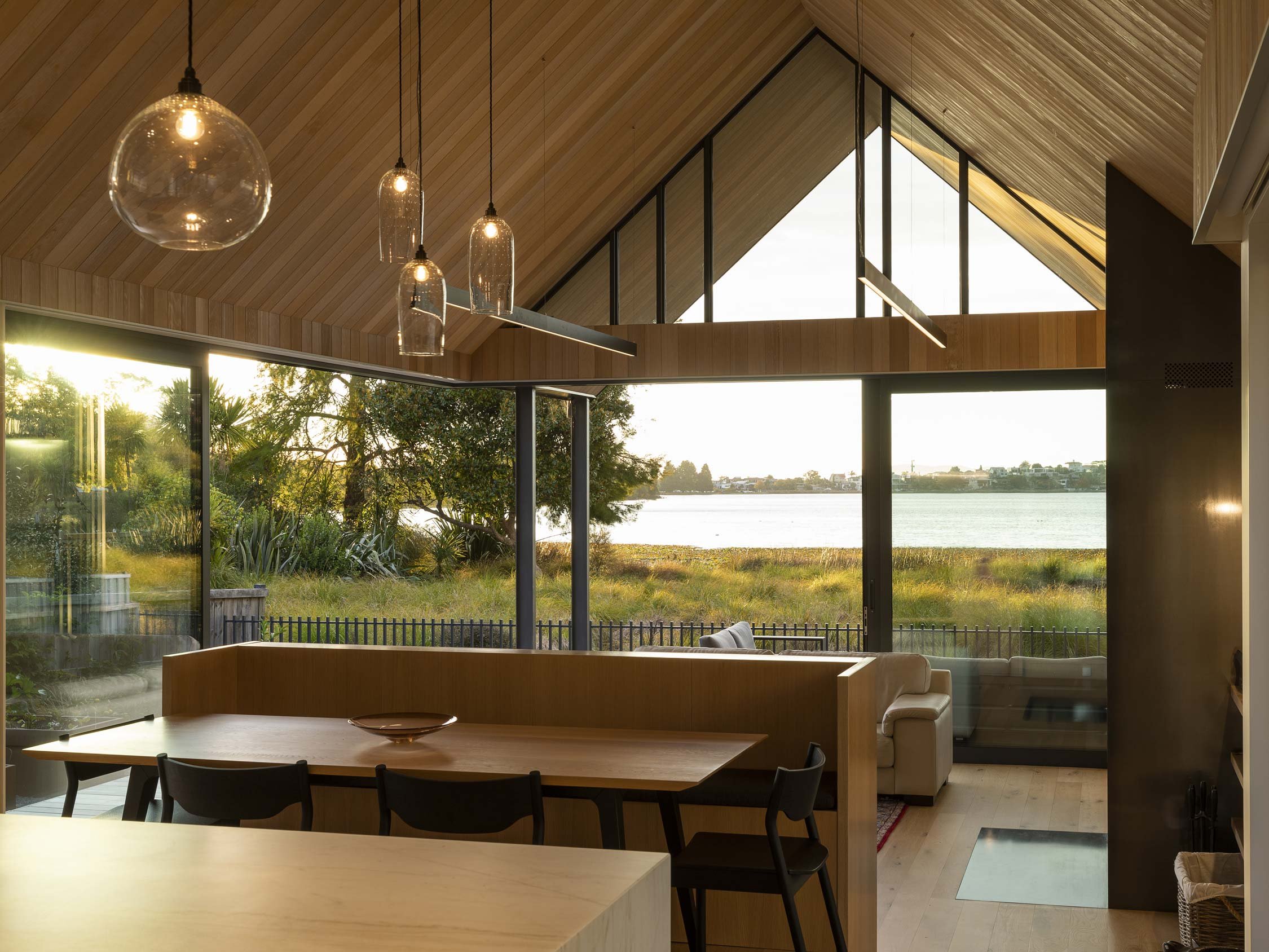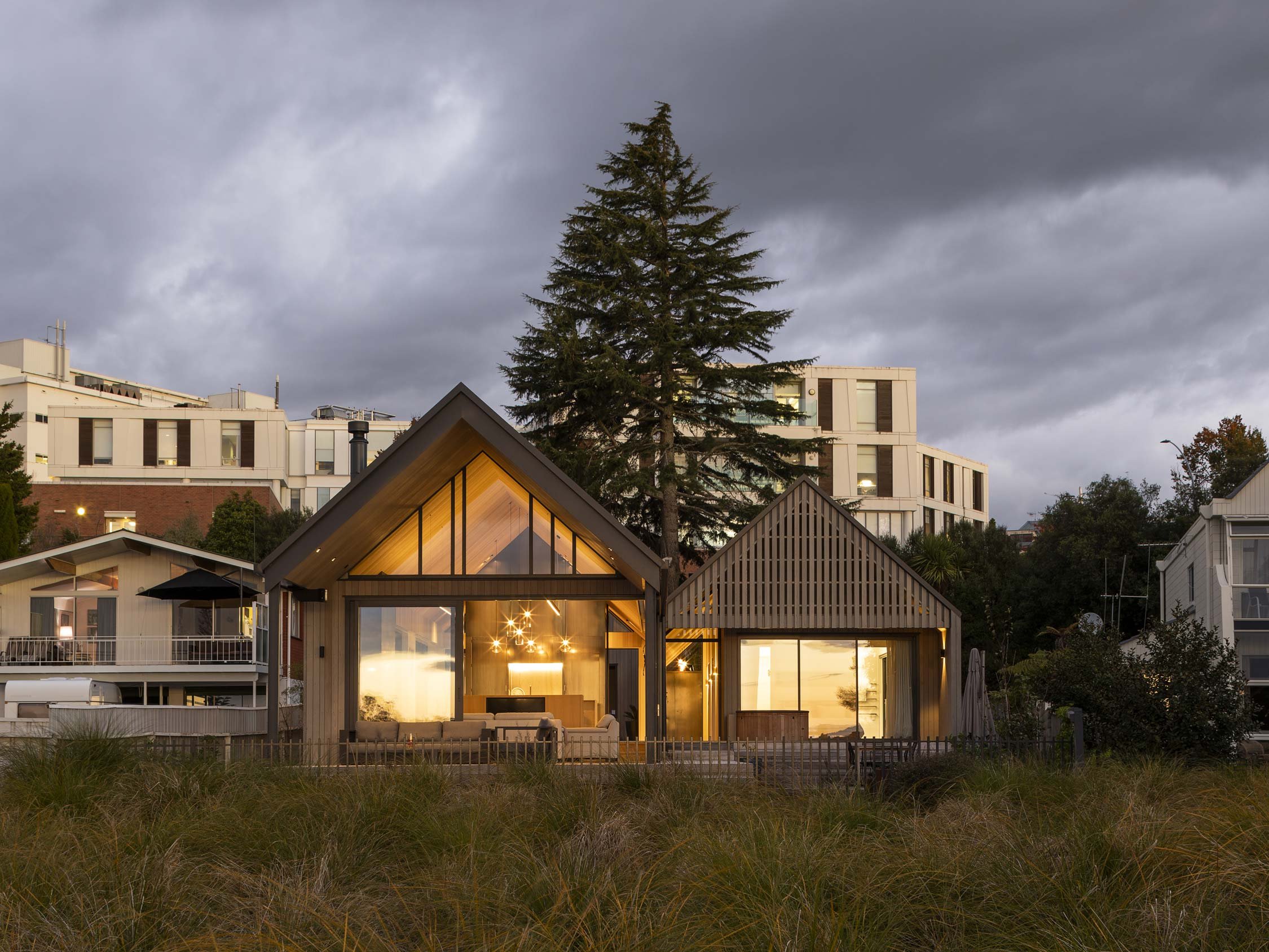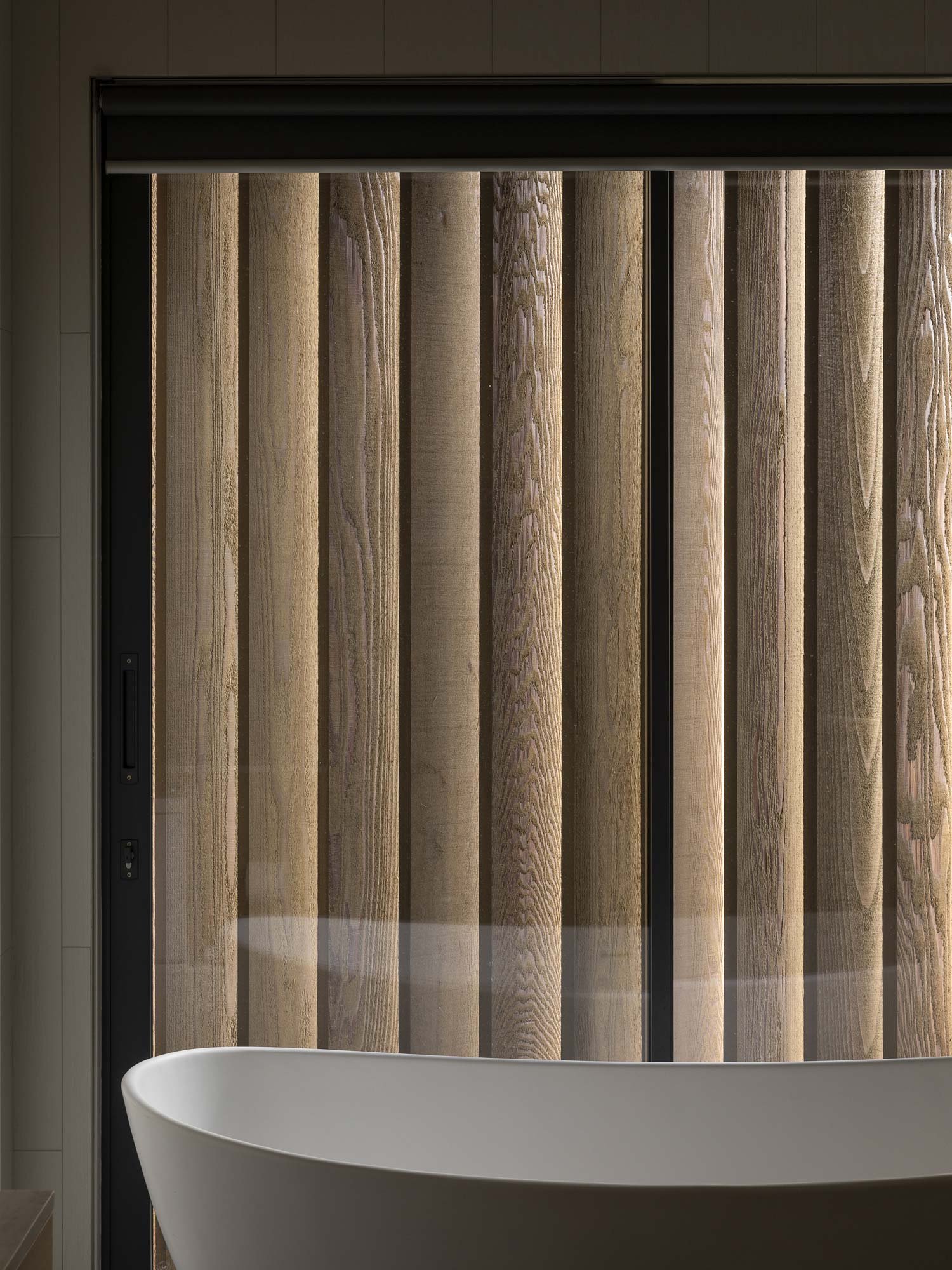
Lake Rotoroa
Located on the southern edge of Lake Rotoroa this home was designed to sit gently above the wetlands on the lakes margin.
Lake Rotoroa, Hamilton, Waikato
New ZealandA series of pavilions stagger towards the lake's edge, containing the core functions of the home and punctuated by a central courtyard garden. A central passageway stitches the pavilions together offering a consistent sightline through the home, to the lake beyond. The edges of the home cantilever above the garden, accentuating the relationship of the built form to the natural landscape in which it sits. Low planting references the heights seen on the perimeter of the lake’s edge and help to make the property, and adjacent lake margins feel part of an uninterrupted whole.
Vaulted ceilings throughout the home are timber lined, to bring a sense of warmth and calm to the living spaces. These extend outside, in an effort to the limit the material palette and focus more on the setting in which it is placed.

A limited material palette allows the focus to gravitate to the setting and surrounds.A steel-clad core anchors the rear of the living pavilion. Extending to the top of the vaulted ceiling, it contains the kitchen scullery and back of house essentials. A hidden door allows this space to be closed off and read as a consistent whole when not in use, while two voids punctuate the sides to also give glimpses into the courtyard and gardens beyond. A wood fire is clad in the same mild steel, acting as a secondary anchor to the scullery in the vaulted living space.
The living pavilion is stepped down to emphasise the close relationship to the lake’s edge. The height of the living area is set to make you feel as though you are amongst the reeds surrounding the lakefront. This step allows an opportunity for dining seating to be built in, whilst doubling as an entertainment unit for the living area behind.

Inset windows puncture the exterior of the home, providing relief along the length of the facades. These elements help to accentuate the cantilever below and also provide recesses for the cedar privacy screens in front of the bathroom spaces. The vertical shiplap exterior is referenced in the timber screening, with wider spacings to let filtered light into the spaces beyond. This consistency and rhythm is also referenced in the overhead screens in front of the master bedroom, helping to dapple afternoon light into the spaces behind.
Concealed guttering helps to further emphasise the simplicity of the hovering forms, limiting the exterior palette, to the vertical lines provided in the cladding, screening and roofing.
The master suite captures morning light through a large apex skylight, located over the ensuite. Lightly tiled, the textured surface softens light as it enters the home.
In order to emphasise and screen certain aspects of the property, simple sightlines were established throughout the home to focus its inhabitants on certain views and aspects. These controlled sightlines help to distil certain moments and provide areas of respite and calm.
The central courtyard garden is one such place that visually anchors the home and draws an inward focus. This provides a seasonal artwork of colour and life, while also serving a functional purpose to offer a space of relief from the prevailing winds and public view in the hot summer months.
Lake House is a special project that draws on the unique environment in which it is set, offering a quiet space to relax and enjoy the view.Next Project
Architecture, Interior Design:
Oli Booth Architecture
Builder: REBL Construction - Roger Elliott
Landscape Designer: Xanthe White Design
Concept Design: Oli Booth Architecture and Adam Locke
Photographer: David Straight






